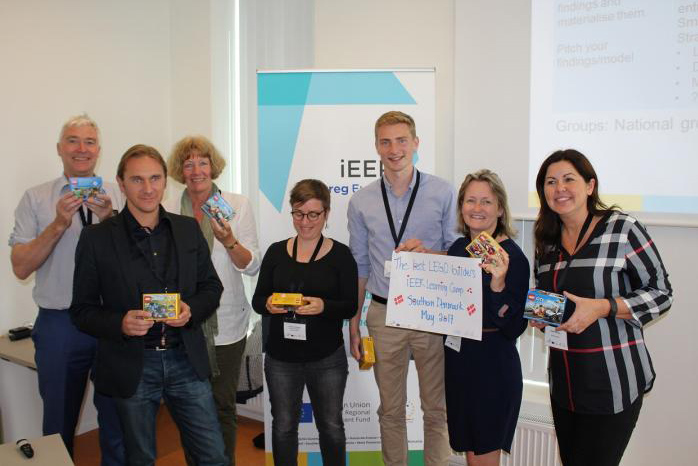The Extreme Light Infrastructure-Nuclear Physics project (ELI-NP) has established a cutting-edge facility for research into photonuclear physics and its applications using laser technologies. Located in Măgurele, in Romania’s Ilfov county, it is part of a wider European project which also includes facilities in Hungary (ELI Attosecond Light Pulse Source) and the Czech Republic (ELI-Beamlines). ELI-NP is set to become operational in 2019 under an open access scheme which makes it free to use for people from the other ELI pillars and external scientific users.
Cutting-edge laser and nuclear physics research facility to open in Romania
- 22 June 2018
ELI-NP is a challenging and exciting cutting-edge international project which gives Romania one of the most advanced research facilities in the world focusing on the study of photonuclear physics and its applications. Thanks to the unique combination of its instruments, it has the potential to be at the forefront of science worldwide for many years.
Equipment for the two arms of the facility’s high-power laser system has now been installed, and testing for the three laser beams – which have potential power output levels of 100 terawatts, 1 petawatt and 10 petawatts – has begun.
Construction of the laser beam transport system is also underway. This conveys the 10-petawatt and 1-petawatt beams to the experimental areas that will house the mirrors for focusing the beams, the targets of the experiments, and laser and radiation diagnostic systems.
The high-power laser system, laser beam transport system and experimental areas are built on top of a large concrete plate which is isolated from the rest of the building and placed on a system of springs to minimise vibrations. Development of two interaction chambers for the 10-petawatt beam’s experimental area and vacuum chambers for the 100-terawatt and 1-petawatt beam areas is ongoing.
Operational laboratories
Some of the laboratories at the facility, such as those for optics and experimental target production, are already operational. The target laboratory has a range of equipment for producing micro- and nano-scale structures – including a system for fabrication of nanostructures on solid targets for improved absorption of laser pulses – and is being continually upgraded.
Researchers from this laboratory have started preparing targets for the initial experiments with the high-power lasers. The laboratory is also involved in master- and doctoral-level educational programmes in the field of micro and nanotechnologies.
Installation of the facility’s gamma beam system and construction of instruments for gamma beam experiments are also proceeding, with some of the instruments ready for use. A main priority in this area is to set up experiments for the low- and high-energy gamma beams. ELI-NP researchers are working with an international scientific committee on this and have conducted a successful preparatory experiment at Duke University in the USA. These studies will continue at ELI-NP.
A research niche
Experiments in Nuclear Resonance Fluorescence (NRF) – a process in which a nucleus absorbs and emits gamma rays – are a specific research niche for the facility. Its equipment will be able to detect gamma rays efficiently in the presence of high radiation, and the NRF technique will be used for precision 3D radiography and tomography, which make it possible to view the internal form or cross-sections of objects. This is an attractive technique for non-destructive analysis of a wide variety of materials.
A device known as a silicon strip array is also under development to measure reactions relevant to astronomical events such as the Big Bang or supernova explosions.
More than 150 researchers from 26 countries are now working at ELI-NP and international-level recruitment is ongoing with a view to reaching 300 employees by 2020.
Total investment and EU funding
Total investment for the project “Extreme Light Infrastructure – Nuclear Physics” is EUR 310 946 691, with the EU’s European Regional Development Fund contributing EUR 116 320 032 and EUR 139 613 526 through the “Competitiveness” Operational Programme for the 2007-2013 and 2014-2020 programming periods, respectively.

